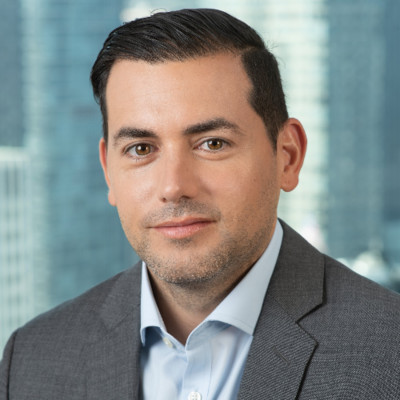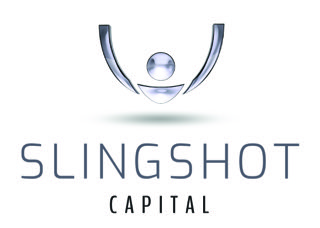John Freund's Posts
3672 ArticlesBoutique Firm Kaye Spiegler Breaks Out from Big Law
Litigation Funding Matures as an Industry
Enforcement in Maritime Cases: There are Options
Shavelogic Topples Gillette Complaint with Burford Capital Funding

Cesar Bello of Corbin Capital Discusses Litigation Funding as an Investment

Kerberos Capital Management Announces World’s First ESG-Linked Debt Product for Litigation Finance Markets
LCM Fund Attracts Investor Interest
Manolete Partners: Onward and Upward

Longford Capital Raises $682 Million for New Investment Fund
Longford Capital Management, LP, a leader in commercial litigation finance, announced the final closing of its most recent fund (including a parallel fund, “Fund III”), at $682 million. Longford’s assets under management now exceed $1.2 billion, placing it among the largest private equity firms focused on investments in legal assets. Fund III is the third private investment fund Longford has closed since the firm began operating in 2013.
Fund III includes repeat investors from Funds I and II, as well as many new investors, attracting capital from state and municipal pension funds, university endowments, foundations, single and multi-family offices, and high-net-worth individuals. Fund III will invest in the outcomes of commercial disputes, antitrust and trade regulation claims, and intellectual property claims that Longford believes to be highly meritorious and have a strong likelihood of success. Fund III has already committed nearly $270 million to new investments.
“Litigation funding continues to gain acceptance among law firms, their clients, and investors alike,” said Timothy S. Farrell, co-founder and managing director of Longford Capital. “We have seen significant growth in interest in litigation finance from leading institutional investors and high-net-worth individuals eager to put their money to work in an uncorrelated asset class.
“The significant capital we have raised gives us the latitude to be flexible and to innovate,” he added. “Groundbreaking agreements with top law firms – like our arrangement with Willkie Farr & Gallagher – are hallmarks of our innovative approach and how we seek to generate returns for our investors. We are grateful for our investors and our law firm and corporate partners.”
Since 2017, Longford has doubled the size of its underwriting team to manage the growing demand for its capital and added several talented business executives to scale its business.
“We’ve assembled an exceptional team of former first-chair litigators from leading law firms and experienced executives from great companies, and our team is the wellspring of our success,” said Farrell. “Private practice litigators and corporate general counsel bring their matters to Longford because our team has walked in their shoes, and each member dedicates his and her thoughtful, diligent and individual attention throughout the lifespan of a matter. This will remain a key element of our culture as we continue to scale our business.”
About Longford Capital
Longford Capital is a private investment company that provides capital to leading law firms, public and private companies, research universities, government agencies, and other entities involved in large-scale, commercial legal disputes. Longford was one of the first litigation funds in the United States and is among the world’s largest litigation finance companies with more than $1.2 billion in assets under management. Typically, Longford funds attorneys’ fees and other costs necessary to pursue meritorious legal claims in return for a share of a favorable settlement or award. The firm manages a diversified portfolio and considers investments in subject matter areas where it has developed considerable expertise, including business-to-business contract claims, antitrust and trade regulation claims, intellectual property claims (including patent, trademark, copyright, and trade secret), fiduciary duty claims, fraud claims, claims in bankruptcy and liquidation, domestic and international arbitrations, claim monetization, insurance matters, and a variety of others.
Contingency Fees vs Group Cost Orders in Victoria
Business Interruption Class Action Filed Against IAG
UK Legal Firms Join Forces with Litigation Funders
Doctor & Consultant Plead Guilty in Pelvic Mesh Scheme

Litigation financing start-up LegalPay’s maiden fund oversubscribed
2021 Legal Finance Survey Shows Uptick in Relevance
Law Commission Review Reveals Conflict Between Funders & Corporates
Legal Funding in Australia: New Developments
Funding Innovators Keller Lenkner See Booming Business

Joshua Victor Wins Tribeca Capital Group Scholarship

Intellectual Property Private Credit (Part 2 of 2)
- Despite its size, the Intellectual property (“IP”) asset class has eluded the attention of most asset managers due to its underlying legal complexities
- Litigation finance industry understands the opportunity, but it is solely focused on litigation involving IP
- A void exists in the financing market, which IP-focused Private Credit managers have begun to fill via credit-oriented strategies designed to drive value maximization
- Secular shifts in the economy have made IP assume an increasing share of corporate value
- IP is an emerging asset class that has begun to garner the attention of asset managers and insurers
- There are various IP-centric investment strategies that do not involve litigation.
- IP-focused Private Credit funds approach IP in a holistic fashion, leveraging numerous ways that IP creates value
- Investors need to be aware that investing in IP presents unique risks that warrant input from operational and legal IP specialists
- IP Credit provides a different risk/reward profile for investors, as compared to commercial litigation finance which tends to have more quasi-binary risk
| Investment | Series A Preferred Stock | Investors | Halcyon/Soryn | |
| Amount | $10.2 million | Terms |
|
Source: https://www.sec.gov/Archives/edgar/data/0001366340/000136634016000051/0001366340-16-000051-index.htm
Series A1 Financing (June 19, 2017)| Investment | Series A Preferred Stock | Investors | Halcyon/Soryn | |
| Amount | $15.3 million | Terms |
| |
| Redemption Rights | Company option to redeem at lesser of: 1. 2.8 X Original Purchase Price 2. Purchase prices ranging from 1.2375X to 1.575+ times based on time elapsed from date of issuance 3. Receipt of share of proceeds from litigation or licensing which varies based on time elapsed from date of issuance |
Source: https://www.sec.gov/Archives/edgar/data/0001366340/000136634017000059/0001366340-17-000059-index.htm
Based on its prior patent licensing success, Finjan likely had numerous traditional, non-recourse litigation financing offers to choose from. But instead of pursuing the litigation finance route, Finjan pursued the IP Credit path. Finjan secured almost $26mm in financing, via two highly-structured preferred equity transactions. These transactions featured share redemptions tied to litigation and/or patent licensing revenue events, and also contained “Negative Event” features that entitled the capital partner to recover all of their shares upon the occurrence of certain, pre-agreed negative events. As illustrated in the chart above, the capital partner’s potential returns were capped at multiples ranging from 1.25 to almost 3x the original purchase price of the shares, with the range depending mainly on the length of time the capital was outstanding. Finjan ultimately exited both deals. While the exact motivations behind the deal cannot be known, it is easily theorized that the highly-structured and downside protected nature of the IP Credit Deal the company ultimately entered into was favorable in a number of respects compared to the higher cost of capital seen in traditional litigation finance arrangements. Finjan was ultimately acquired by Fortress Investment Group in 2020. Interplay with IP litigation Of note, and particularly with respect to patents, enforcement litigation is often a necessary tool to resolve licensing disputes or negotiations between IP owners and potential licensees. The reason is that without litigation, a patent owner has no means to force a party that it believes is infringing its IP to the negotiating table. Litigation scenarios thus remain part of the broader IP Private Credit strategy. But such litigations can take different shapes and risk profiles. On one end of the risk spectrum are single event litigations, involving a small number of patents, that represent unattractive and binary risk profiles. On the other end of the spectrum are multi-venue disputes, involving a significant number of patents, brought by entities owning much larger patent portfolios than what is asserted in litigation. These types of situations (shown above to the right of the arrow) resemble business negotiations moreso than binary litigation, and can be modeled to resolve in a more predictable fashion. By the nature of a credit-oriented investment strategy, an IP-focused Private Credit fund targets the latter opportunity set, whereas the litigation finance market has shown a willingness to fund what we characterize as the riskier, more binary type enforcement situations. Accordingly, while litigation is not necessarily an outcome that results from such an investment, a manager that invests in the sector does need to expect, plan and prepare for litigation as a potential outcome, or at the very least as a means to an end. The idea, as with most litigation, is that ‘saner heads will prevail’ and that a commercially reasonable settlement will be achieved by both parties prior to embarking on expensive litigation. Of course, this means that the onus is on the investor to understand the merits of the case and the plaintiff’s strategic position, potential defenses, procedural activities that could frustrate or delay litigation, and the costs associated therewith. The complexities associated with understanding the value of intellectual property assets, and the complexity of the litigation process, make the sector a highly specialized area for investors who are often best served by investing with or alongside specialist managers.
These types of situations (shown above to the right of the arrow) resemble business negotiations moreso than binary litigation, and can be modeled to resolve in a more predictable fashion. By the nature of a credit-oriented investment strategy, an IP-focused Private Credit fund targets the latter opportunity set, whereas the litigation finance market has shown a willingness to fund what we characterize as the riskier, more binary type enforcement situations. Accordingly, while litigation is not necessarily an outcome that results from such an investment, a manager that invests in the sector does need to expect, plan and prepare for litigation as a potential outcome, or at the very least as a means to an end. The idea, as with most litigation, is that ‘saner heads will prevail’ and that a commercially reasonable settlement will be achieved by both parties prior to embarking on expensive litigation. Of course, this means that the onus is on the investor to understand the merits of the case and the plaintiff’s strategic position, potential defenses, procedural activities that could frustrate or delay litigation, and the costs associated therewith. The complexities associated with understanding the value of intellectual property assets, and the complexity of the litigation process, make the sector a highly specialized area for investors who are often best served by investing with or alongside specialist managers.  Slingshot Insights Secular shifts in the economy should be forcing investors to think about value in different ways. It’s indisputable that intellectual property is clearly the basis for technology company valuations, and therefore value must be attributable to IP when considering financing alternatives. While understanding the value inherent in intellectual property can be difficult, fund managers with specific expertise exist to allow investors to allocate capital in an appropriate risk adjusted manner. The fact that the insurance industry is now providing insurance products geared toward intellectual property is a testament to how far the industry has come and how significant the opportunity is, and perhaps much less risky than one would think, if approached prudently. I believe the IP Credit asset class has a bright future, as existing players have had great success producing consistent returns in a sector that one might otherwise believe to be volatile. As always, I welcome your comments and counter-points to those raised in this article.
Slingshot Insights Secular shifts in the economy should be forcing investors to think about value in different ways. It’s indisputable that intellectual property is clearly the basis for technology company valuations, and therefore value must be attributable to IP when considering financing alternatives. While understanding the value inherent in intellectual property can be difficult, fund managers with specific expertise exist to allow investors to allocate capital in an appropriate risk adjusted manner. The fact that the insurance industry is now providing insurance products geared toward intellectual property is a testament to how far the industry has come and how significant the opportunity is, and perhaps much less risky than one would think, if approached prudently. I believe the IP Credit asset class has a bright future, as existing players have had great success producing consistent returns in a sector that one might otherwise believe to be volatile. As always, I welcome your comments and counter-points to those raised in this article.  Edward Truant is the founder of Slingshot Capital Inc. and an investor in the consumer and commercial litigation finance industry. Slingshot Capital inc. is involved in the origination and design of unique opportunities in legal finance markets, globally, investing with and alongside institutional investors.
Edward Truant is the founder of Slingshot Capital Inc. and an investor in the consumer and commercial litigation finance industry. Slingshot Capital inc. is involved in the origination and design of unique opportunities in legal finance markets, globally, investing with and alongside institutional investors.  Soryn IP Capital Management LLC (“Soryn”) is an investment management firm focused on providing flexible financing solutions to companies, law firms and universities that own and manage valuable intellectual property (“IP”) assets. Soryn’s approach employs strategies, including private credit, legal finance, and specialty IP finance, which enable it to invest across a diversity of unique IP-centric opportunities via investments structured as debt, equity, derivatives, and other financial contracts. The Soryn team is comprised of seasoned IP and investment professionals, allowing the firm to directly source opportunities less travelled by traditional alternative asset managers.
Soryn IP Capital Management LLC (“Soryn”) is an investment management firm focused on providing flexible financing solutions to companies, law firms and universities that own and manage valuable intellectual property (“IP”) assets. Soryn’s approach employs strategies, including private credit, legal finance, and specialty IP finance, which enable it to invest across a diversity of unique IP-centric opportunities via investments structured as debt, equity, derivatives, and other financial contracts. The Soryn team is comprised of seasoned IP and investment professionals, allowing the firm to directly source opportunities less travelled by traditional alternative asset managers.Covered Bridge Capital Named Best Consumer Litigation Funding Provider
Pretium Partners Launches Litigation Funding Group
EU Parliament Considers Increased Litigation Funding Legislation
- Ensuring that funders do not supersede the wishes of claimants
- Employing safeguards against conflicts of interest
- Licensing systems similar to what Australia has mandated
- Requirements regarding capital minimums and security for costs
- Fee caps
- Disclosure
Costs Awarded to Volkswagen in Takata Airbag Action



